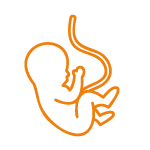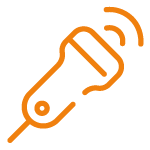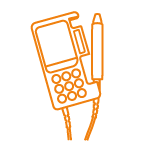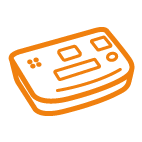Drainage and outlet management
One treatment option for patients with refractory, recurrent ascites and/or pleural effusion is the implantation of a tunneled pleural or peritoneal indwelling catheter.
Drainage and outlet management
One treatment option for patients with refractory, recurrent ascites and/or pleural effusion is the implantation of a tunneled pleural or peritoneal indwelling catheter.
If you are caring for a patient directly after the implantation of a tunneled indwelling catheter or if a patient with an indwelling catheter has been re-hospitalized, we have summarized some information here for your quick orientation.
1. drainage instructions
Depending on the medical prescription, the effusion should be drained intermittently or the indwelling catheter is permanently connected to a closed drainage system. Find out more about temporary drainage in the department here.
2. flushing the catheter
Depending on the course of the underlying disease responsible for the formation of ascites or pleural effusion, the catheter may become occluded due to high viscosity, a high fibrin content or blood clots. If this occlusion is not released by milking or drainage with suction, the catheter can be flushed.
3. exit management
Information on discharge management for your patient who has had a tunneled indwelling catheter implanted due to therapy-resistant recurrent pleural effusion or ascites. After instruction from a product specialist from ewimed Switzerland AG, the patient can carry out the recurring drainage at home independently with relatives or the Spitex.





